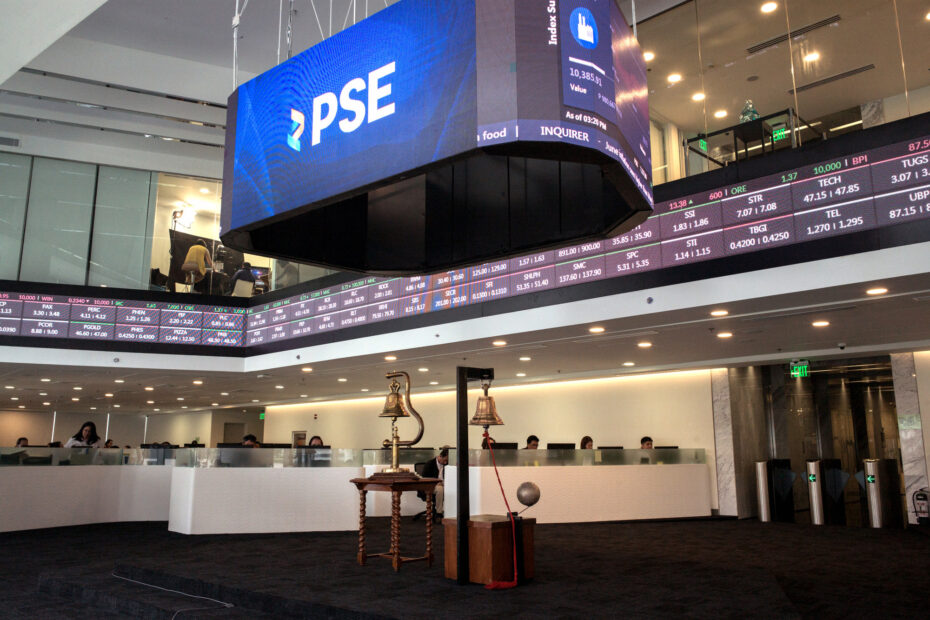The Philippine Stock Exchange (PSE) has made a monumental announcement that is poised to reshape the nation’s financial markets. Starting October 23, 2023, short-selling will be introduced in the Philippines. This move is expected to bring about significant changes in trading dynamics, providing new opportunities while raising concerns for investors and traders alike.
In this post, we dive into the concept of short-selling, examine its potential impact on the Philippine stock market, and discuss the process of share borrowing and lending.
Understanding Short-Selling:
Short-selling is a trading strategy where an investor borrows a security and sells it on the open market with the expectation that its price will decline. The investor plans to repurchase the shares at a lower price, return them to the lender, and profit from the price difference. This practice allows investors to profit from falling stock prices, which is the opposite of the more traditional “long” investment, where you buy a security with the hope its value will rise.
Pros of Short-Selling:
- Price Discovery: Short-selling enhances price discovery by providing an avenue for traders to express negative sentiment about a stock. This can lead to more accurate stock prices, as it helps in reflecting both bullish and bearish sentiments.
- Risk Management: Short-selling can be used as a risk management tool. It enables investors to hedge their portfolios against potential market downturns, reducing overall risk exposure.
- Increased Liquidity: By allowing both buying and selling pressure in the market, short-selling can lead to increased liquidity. More trading activity can attract more participants, including institutional investors.
- Enhanced Market Efficiency: Short-selling can improve market efficiency by discouraging overvaluation and promoting efficient allocation of capital. This can ultimately benefit long-term investors.
Cons of Short-Selling:
- Market Volatility: Critics argue that short-selling can exacerbate market volatility by amplifying downward price movements. This may lead to heightened uncertainty and concerns among investors.
- Potential Manipulation: Some investors may use short-selling to manipulate stock prices or spread false information to profit from a security’s decline. Proper regulations and oversight are crucial to mitigate this risk.
- Losses Can Be Unlimited: Unlike long positions, where the maximum loss is the initial investment, short-selling carries unlimited potential losses if the stock price rises significantly.
The Process of Shares Borrowing and Lending in the Philippines:
- Borrower and Lender Agreement: To engage in short-selling, a trader, the “borrower,” must enter into an agreement with a stock lender, typically a brokerage or financial institution. This agreement outlines the terms and conditions of the short sale, including the borrowed shares’ quantity and interest rates.
- Borrowing the Shares: Once the agreement is in place, the borrower acquires the shares from the lender. In the Philippine context, the Securities Borrowing and Lending Program (SBL) facilitated by the PSE regulates and oversees this process.
- Selling the Shares: The borrower sells the borrowed shares on the open market. The goal is to repurchase these shares at a lower price.
- Returning the Shares: After buying back the shares at the lower price, the borrower returns them to the lender. The difference between the selling price and the repurchase price constitutes the borrower’s profit or loss.
- Regulatory Oversight: The PSE and the Philippine Securities and Exchange Commission (SEC) maintain a stringent framework to ensure the proper execution of short-selling transactions, including rules to avoid market manipulation and the protection of investor interests.
The introduction of short-selling in the Philippine stock market is a significant milestone that will have far-reaching consequences for investors and the broader financial ecosystem. While it offers the potential for increased market efficiency, price discovery, and risk management, it also brings new challenges related to market volatility and investor sentiment.
As we approach its official launch, investors and traders in the Philippines are advised to familiarize themselves with the rules and regulations governing short-selling to make informed decisions and adapt their strategies to the changing market landscape.
The Philippine financial market is on the brink of a new era, and it’s an exciting time for those who seek to navigate the complexities of short-selling while benefiting from the checks and balances in place.
If you want to learn more about short-selling and shares borrowing and lending you can read the PSE guidelines here: https://www.pse.com.ph/regulation-trading-products/#rtpp5
Online Seminar for short-selling and shares borrowing and lending:


